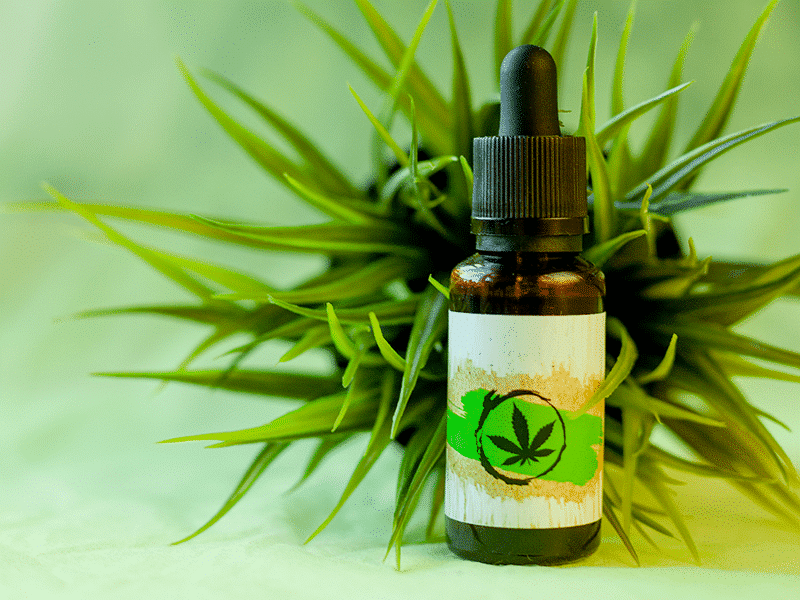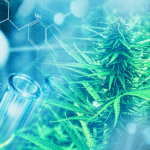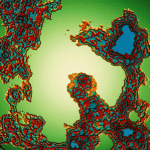Add it to the list: cannabis-derived cannabinoids, including CBD, may be good for bone health, too. Researchers have been investigating cannabinoid receptor expression and the production of endocannabinoids and their partner enzymes in bone tissue for a couple decades. But as with most areas of cannabinoid science it appears to be a subject of growing interest lately, in terms of both basic science and the testing of potential treatments for bone disease or injury.
According to PubMed, the words “cannabinoid” and “bone” appeared together in 36 papers in 2020, and 33 papers in 2021. These may not seem like big numbers until comparing them to those for cannabis and autism, arguably a higher-profile research area. “Autism” appeared alongside “cannabinoid” in 23 scientific papers in 2020, and 38 in 2021.
Granted, these search-term comparisons offer only a vague view of research trends because they don’t account for the core content of the papers in question – only whether or not those terms appear anywhere in the text. But a flurry of targeted papers in recent months, including two reviews and four experimental studies, confirms that researchers around the world are continuing to probe connections between bone health and the endocannabinoid system (ECS).
Cannabinoids & Bone Disorders
Two new articles offer a helpful introduction to the subject by reviewing potential applications of exogenous cannabinoids – both synthetic and cannabis-derived – for the treatment of bone diseases and disorders including osteoarthritis (the most common form of arthritis, occurring when protective cartilage at the ends of bones wears down), osteoporosis (a condition in which bones become weak and brittle), and bone cancer.
The first, published by a team of Italian researchers in the International Journal of Molecular Sciences1 last November, concludes that “pharmacological modulation of the endocannabinoid system” – particularly through synthetic molecules targeting the CB2 receptor (a highly touted but yet-unproven pathway for addressing a wide variety of ailments via the ECS) – “could offer a possible treatment for pathological conditions where altered [bone cell] activity is observed.”
The second recent review, published in January 2022 in the journal Frontiers in Pharmacology2 by researchers at Nanchang University in China, summarizes findings from 20 years of research into the ECS and bone diseases. In particular, it highlights preclinical studies of cannabis-based therapies in animals suggesting that plant cannabinoids can “alleviate the development of osteoarthritis, prevent osteoporosis, reduce cancer-induced osteolytic destruction, and improve fracture healing.”
Healing Bones Through Cannabis?
Informed by evidence of the role of the ECS in bone metabolism, two recent studies investigated whether cannabis or CBD specifically could support bone healing after injury, illness, or other trauma.
In March 2022, researchers with the University of Texas Health Science Center at San Antonio and Harvard Medical School/Boston Children’s Hospital published a paper in the Journal of Orthopaedic Trauma3 describing an unusual study in which bone healing after a fracture was assessed among cannabis-using and non-using pediatric patients. The study population included 399 patients ages 10 to 18 who were surgically treated for a bone fracture between 2010 and 2020, of whom 21 were cannabis users according to toxicology screening.
When comparing “time to union,” a measure of fracture healing, the researchers found that cannabis users healed significantly slower than non-users: twice as long on average, in fact. A variety of other variables were also collected and controlled for, but the study’s small sample of cannabis users among a youth cohort represents an important limitation.
An upcoming paper in Colloids and Surfaces B: Biointerfaces4 from researchers in China, meanwhile, suggests that a CBD-infused copper hydrogel may be effective at helping repair open bone defects. Compared to a CBD-free control gel, the medicated gel showed significant anti-bacterial, anti-inflammatory, angiogenic (promoting the formation of new blood vessels), and osteogenic (promoting bone growth) activities in in vitro studies. Copper is well known as an antimicrobial, particularly in health care settings, and the authors note that the control gel on its own still exhibited some biological activity.
Targeting the CB2 Receptor
As Project CBD has covered in the past, selective CB2 agonists are an enticing solution for many researchers and pharmaceutical companies investigating cannabinoid-based therapies, in part because they bypass the intoxicating effects of CB1 receptor activation. But to date such drugs have been disappointing in the clinical context due to unintended consequences and other unwelcome outcomes resulting from CB2’s incredibly wide reach in the human body.
Yet the CB2 pathway continues to play a prominent role in cannabinoid research, and the arena of bone health is no exception. Two recent studies out of China offer examples.
First, a paper published in Molecules5 in January 2022 identified five “botanical” CB2 receptor agonists that showed evidence in lab testing of beneficial effects on bone cells. The paper doesn’t specify whether these compounds come from cannabis, mentioned once in the paper, or from kava, a plant native to the South Pacific that also contains CB2 agonists and is referenced in the citations.
Then in February 2022, a paper in the International Journal of Stem Cells6 described an experiment in which researchers tested the effects of cannabidiol (CBD) on mouse bone marrow stem cells. Sure enough, they found that CBD, primarily through a CB2-dependent pathway (though not via direct CB2 activation), reduced inflammation markers as well as promoted new bone cell growth.
Nate Seltenrich, Project CBD contributing writer, is the author of the column Bridging the Gap. An independent science journalist based in the San Francisco Bay Area, he covers a wide range of subjects, including environmental health, neuroscience, and pharmacology. © Copyright, Project CBD. May not be reprinted without permission.
Footnotes
- https://www.mdpi.com/1422-0067/22/22/12374/htm
- https://www.frontiersin.org/articles/10.3389/fphar.2021.793750/full
- https://journals.lww.com/jorthotrauma/Abstract/2022/03000/Marijuana_Use_…
- https://www.sciencedirect.com/science/article/abs/pii/S0927776522000224?…
- https://www.mdpi.com/1420-3049/27/3/702/htm
- https://www.ijstemcell.com/journal/view.html?uid=533&vmd=Full
Recommended Readings
New Developments in Cannabis Medicine with Dr. Goldstein
Project CBD talks with Dr. Bonni Goldstein about whole plant cannabis remedies, nonintoxicating cannabinoids, and cancer care for children.
CB1 & Hormone Therapy
A new study indicates that activating CB1 may prolong the therapeutic window of HRT.
CBD as a Steroid Sparing Treatment
Could cannabidiol be a breakthrough therapy to replace or lessen the use of steroids?










